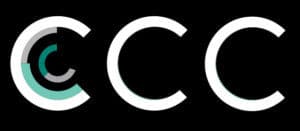Multidisciplinary Training
The training for individuals entering the multidisciplinary field of cell biology should include extensive STEM education, covering genetics, cell biology, physics, computer programming, engineering, and math. It should also encompass biochemistry, biophysics, molecular biology, and data science. Emphasis should be placed on understanding cells biologically, chemically, and physically, including their mechanics and the molecules they produce. Training should foster a “maker’s mindset,” and the ability to handle both experimental success and failure.
We are focusing on graduate and postdoc training, mentorship, and strengthening research infrastructure resources among partner institutions. At the level of graduate and postdoctoral training, we are pooling our efforts to attract talented undergraduate students to join our graduate programs and, once in those programs, to encourage them to do their studies in center labs.
We have negotiated access to all UCSF technical resources and core facilities for center members from other institutions, and provide access to the widest possible variety of technological resources available.
ENGAGEMENT / OUTREACH
We are committed to building awareness of the new discipline of Cellular Engineering and the potential of harnessing the power of cells to develop innovative approaches to complex environmental and medical challenges. The Center’s outreach activities seek to engage the public across a broad range of ages and backgrounds with Cellular Engineering. Outreach occurs at Maker Faire and Science Festival events in the Bay Area and beyond, through novel hands-on exhibits at The Exploratorium, and at Hack-a-thon events. Each of these venues engages a different audience.
MAKER FAIRE
Maker Faires bring together DIY hobbyists and people interested in electronics, crafts, and science. Attendees are curious, deeply engaged, and excited to share their own ideas and learn from others. Science Festivals are largely free events that attract young families, science enthusiasts, and curious passers-by to learn from scientists and engineers. We have developed three hands-on exhibits for these events, and are committed to expanding our range of Faire and Festival activities. One of these exhibits engages attendees in question about cell behavior and learning in response to mechanical stimulation, using an apparatus developed at UCSF. The second enables attendees to look at a wide variety of cells using a low-cost, microscope developed by the team at IBM. We also bring a LEGO Mindstorms robot programmed to model the behavior of a cell that avoids light. These outreach activities serve not only to build awareness about cellular engineering and the Center for Cellular Construction, but also provide an opportunity for Center trainees to gain experience communicating science.
EXPLORATORIUM
In addition to our “Pop-up” demonstrations and exhibits at Maker Faires and Science Festivals, we are partnering with the Exploratorium to develop permanent exhibits and demonstrations at the Exploratorium. The Exploratorium is one of the world’s largest science museums, with a long track record of hands-on science education, and it is a destination for over 800,000 visitors from around the world each year. Center members are collaborating with Exploratorium staff to develop exhibits as part of the Exploratorium’s new, permanent exhibition “Cells to Self” that elucidate the big ideas of Cellular Engineering and build the public’s awareness of this emerging discipline.

